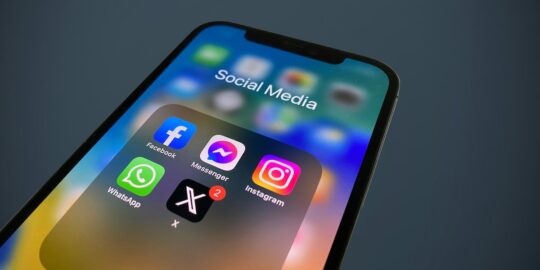
Vivi was built with in-depth consultation from educators, and we continue to seek feedback from schools all around the world. Different teachers use the system in different ways but what we hear, again and again, is that Vivi is much more than a convenient piece of technology, it’s changing the way that they teach.
Here are three examples:
Delivering a richer classroom experience
For Peter McFadden, religion and humanities teacher at Mt St Michael’s College in Brisbane, Vivi has opened up a world of online resources that he can share with his students quickly and seamlessly. “Vivi is a lot more accessible and direct than other kinds of technologies that we’ve used,” he says. “It’s very simple. There are no intermediate steps.”
Before a lesson, he’ll draw together a list of URLs for video footage and other media, which he then plays for his students to illustrate specific points or ideas, using Vivi to quickly and easily jump between different online platforms.
“Previously it would take an enormous amount of time to prepare anything like that. Now, this media is just a click away,” he says. “You can play short little excerpts, and you can compare and contrast and get the students to evaluate things quite critically, which you couldn’t ever really do before.”
In a recent example, Peter’s students were, “looking at the changing acceptance of Indigenous spirituality and culture in Australia,” and were able to watch and discuss the Prime Minister’s 1988 Australia Day speech and a Qantas ad from around the same time, among other videos. Peter recalls, “I said to the girls, ‘This is what I’ve lived through. I’ve experienced this change.’ But accessing these primary sources through Vivi, it allowed them to see what I’ve experienced.”
Being exposed to such a broad range of media content, “means a great deal to the students in terms of learning outcomes,” he says. “It makes for a much richer education.”
For Peter, Vivi allows him to ‘Give student control’ so their work or research can easily be displaying on the screen. This allows instant sharing of resources and research with the class and helps develop a classroom with enhanced levels of student engagement and input.
Letting students become the teacher
Saxon Bowles, Head of Science at Sydney’s Oakhill College, describes the Vivi-enabled classroom as a highly collaborative space, where the teacher is no longer “locked down to a desk,” and the students take a much more proactive role in their education.
“Vivi gives the students the opportunity to put what they’re learning up in front of their peers,” Saxon explains. “It’s no longer the teacher saying, ‘I think this is important so I’m going to put this up and you copy these notes down.’” If I ask the environmental science class to do case studies on a natural disaster, say, we get twelve students putting twelve different case studies up. We’re not limited to just what I want. And the information is coming from them, in clear language their peers understand.”
So the students are exposed to a greater breadth of content and ideas, and they can see it presented from different, relatable points of view. And in familiar language too. “As the teacher, the language that the students use isn’t foreign but, year after year, we tend to fall behind a little with the way they talk,” says Saxon. “But when you have notes presented by a student, or if we put up an example HSC question, often in the way the student answers it, you see the lightbulbs go on.”
Keeping kids engaged and inspired
Deborah Trease teaches Year 5 students at Cooloola Christian College in Gympie, Queensland. She uses Vivi as a hub for seamlessly accessing and presenting online teaching resources like iMaths, Sound Waves and ClickView, and media platforms like YouTube. One area where Deborah finds it particularly useful is during lesson transitions. The ease with which she can access different media means she can keep her students engaged with relevant or entertaining content while she changes lessons.
“With Vivi, I can be quick,” Deborah says. “All of my teaching resources are at my fingertips.”
And when she senses that the kids are becoming restless, she can use it to reset the class and bring them back into focus. “When you just need one of those little brain breaks, you can quickly put a clip on, and it just gets them thinking a little bit better,” she says.
Deborah also uses Vivi as a source of inspiration when her class begins a writing task. “Sometimes kids just struggle to get started writing,” she explains. “But if you bring up a few images or clips on how to approach the task – someone saying what you’ve already said, but in a different way – kids will often grab it and run with it.”



